10 mins read
Exploring the Top 10 Construction Projects in the UK

The latest construction projects in the UK are part of a long legacy of stunning architectural design and infrastructure. The industrial revolution, centuries of population growth, and fossil-fuel consumption have now given way to sustainable solutions that improve quality of life, with a new class of buildings, tunnels, and railways.
Top 10 Construction Projects in the UK
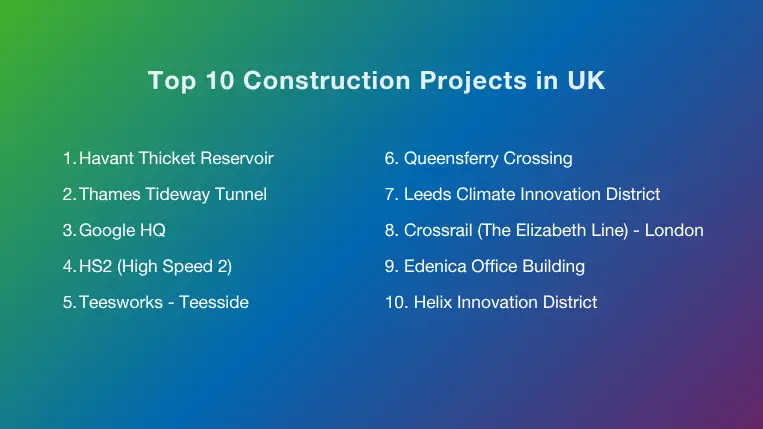
Despite the rising material costs and talent shortages impacting Europe and many other parts of the world, construction in the UK remains strong, with over two million employees currently working in the industry. The new software and technology, government infrastructure investment, and green building practices seen in our list of major construction projects in the UK bode well for future growth and modernization.
1. Havant Thicket Reservoir

Topping our list is the ambitious 8.7 billion liter Havant Thicket Reservoir near Rowlands Castle in East Hampshire. The project, developed and funded by Southern Water Company, is intended to protect international rare rivers in the area by providing an alternate, sustainable source of water for the local communities. The £340 million (USD $400 million) endeavor will be the first such undertaking in the Southeast UK since 1970.
Once the new reservoir opens in 2029, it will also provide a green leisure facility and park for the enjoyment of residents. Advanced 3D design software and CGI animation were used to design and model the unique system of tunnels and retaining walls that made the massive scale of the infrastructure possible.
2. Thames Tideway Tunnel
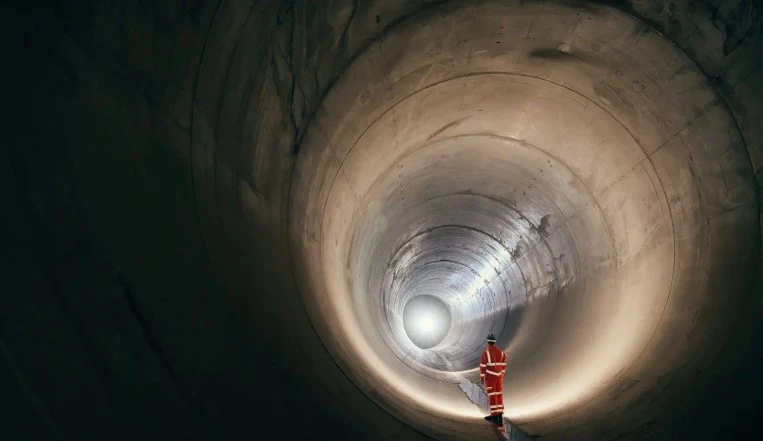
The Thames Tideway Tunnel is another ambitious construction project in the UK. The tunnel resolves a decades-old problem by reliably steering wastewater overflow away from the Thames River. The £5 billion (USD $6.3 billion) budget was used to purchase and operate four giant tunnel boring machines (TBMs) and pay for the services of over 4,000 skilled construction workers.
The 7.2-meter-high main tunnel officially opened in 2025, providing a drainage route for 34 of the most polluting sewer overflows. An additional 21 shafts were completed to launch tunneling machines and reroute sewage flows, and a series of ingenious tunnel pen stocks were installed to ensure that only clean rainwater can return to the Thames.
3. Google HQ
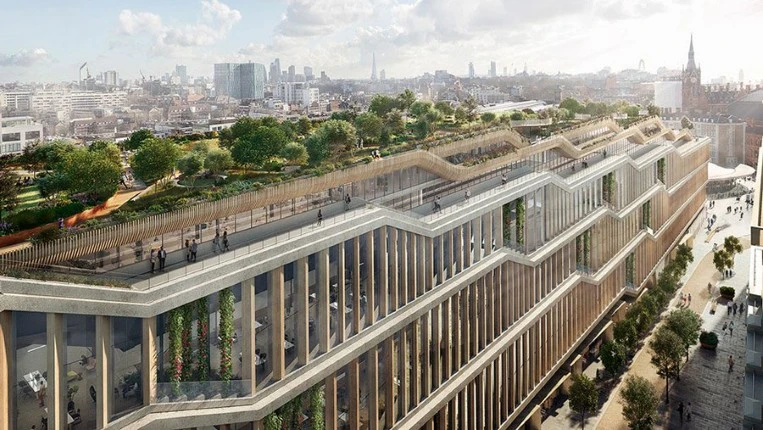
The new 60,400-square-meter Google Headquarters (HQ) building in London will soon become the workplace for up to 4,500 Google employees. Known as a “landscraper” for its extended (rather than tall) profile, the unique building design features a rooftop garden complete with 250 trees, planted in 40,000 tons of soil. As the first Google-owned and designed building outside the United States, the new headquarters also features a basketball court, gym, and swimming pool. Google is currently pursuing LEED and BREEAM certifications for this environmentally friendly and energy-efficient UK hub.
4. HS2 (High Speed 2)
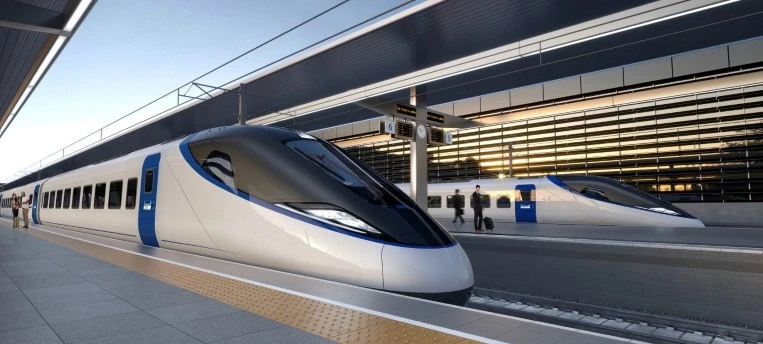
The largest and fastest major railway in the UK’s history, with speeds expected to reach an astonishing 360 kph between London and Birmingham, is scheduled for Phase 1 completion in 2030. Known as High Speed 2 (HS2), the railway was designed for 100% zero-carbon travel, with modern, all-electric trains powered solely by renewable energy sources.
The £54 billion (USD $61 billion) project is also expected to create jobs for 31,000 people and opportunities for 3,400 businesses to tender their products and services. A significant portion of the funding will go towards structures such as tunnels, embankments, and new stations along the route. HS2 designers are heavily relying on building information modeling (BIM), digital twins, and augmented reality to enhance visibility, efficiency, and collaboration.
5. Teesworks – Teesside
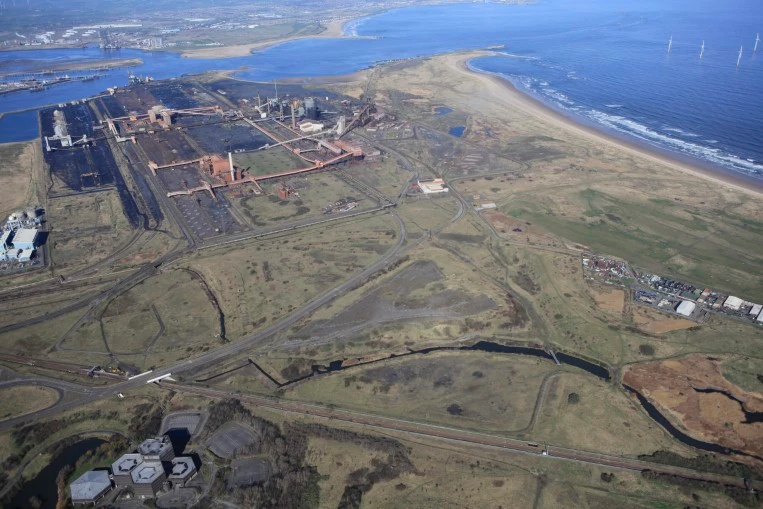
The 2,500-acre Teesworks site, a former steelworks location bordering the River Tees, is now the largest and most connected industrial zone in Europe, with an emphasis on sustainability and environmentally friendly development. An advanced carbon capture facility, capable of removing 10 million tons of carbon per year from the atmosphere, lies at the heart of this complex, making a significant contribution to the overall site objective.
The Teesworks development also includes wind energy plants, advanced manufacturing facilities, and office buildings, along with the Teesside private wire network, which was created to deliver clean power to local businesses and residents. Thus far, Teesworks has secured £2 billion (USD $2.25 billion) in investment from occupiers and created 2,725 new jobs.
6. Queensferry Crossing

Known as a “bridge to the future,” the 2.7-kilometer Queensferry Crossing is the longest cable-stayed, 3-tower bridge in the world. This modern bridge in Scotland was also one of the biggest construction projects in the UK in recent years, requiring 10 million staff hours, 23,000 miles of cabling, and 150,000 tons of concrete to complete.
The project contractors for Queensferry Crossing selected RIB Candy as their takeoff, estimation, and planning software to improve the speed and accuracy of project estimates while providing cost data transparency through a common interface. The £1.34 billion (USD $1.5 billion) final project cost was slightly under budget, a rarity for large-scale infrastructure in the UK (and elsewhere).
7. Leeds Climate Innovation District
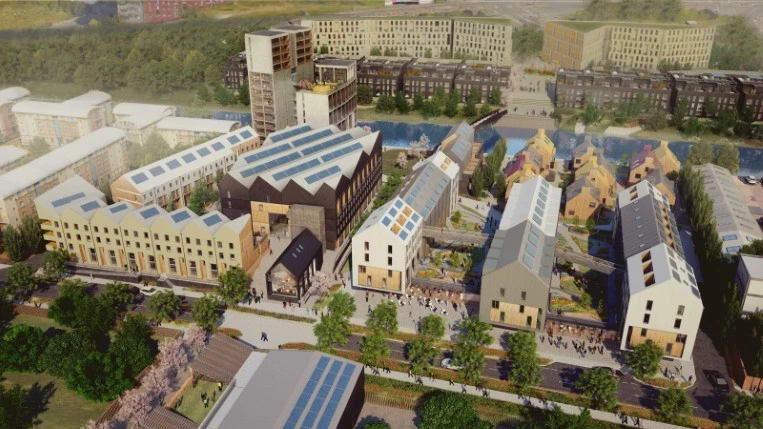
Like many other notable construction projects in the UK today, the Climate Innovation District in Leeds utilized sustainable building materials and innovative technologies to convert an old-world industrial district into a modern green living environment. Requiring an investment of £125 million (USD $140 million), the district includes 516 low-carbon homes, along with parks, shopping centers, and other amenities.
The builders and designers of the Climate Innovation District leveraged several advanced software tools, including the Passive House Planning Package (PHPP) to assess building performance, and BIM software to integrate and model design information efficiently.
8. Crossrail (The Elizabeth Line) – London
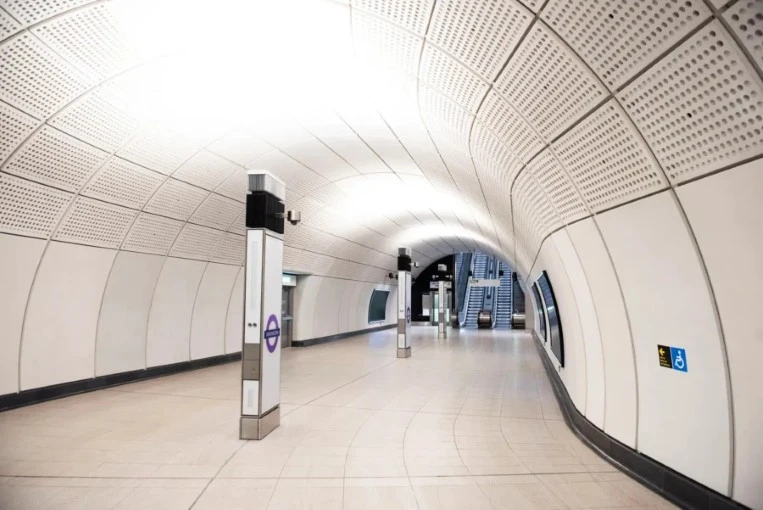
The largest recent infrastructure construction project in Europe is the next entry on our top 10 list. The £18.8 billion (USD $21 billion) Elizabeth Line underground railway in London, completed in 2022, includes 10 brand new stations, 31 station upgrades, and 42 kilometers of tunneling under the capital city. To complete this incredible engineering feat, eight tunnel-boring machines weighing 1,000 tons each operated 24 hours per day, utilizing the latest AI, automation, and sensing technology to avoid obstacles and prevent delays.
9. Edenica Office Building
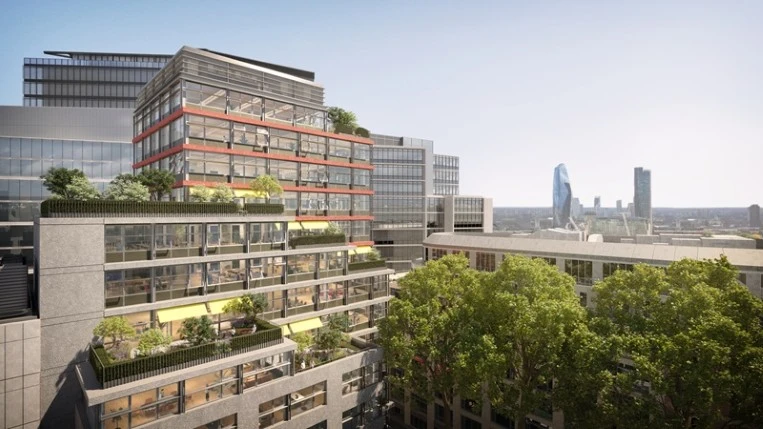
The 8,700 square meters Edenica Office Building in London continues the recurring theme of sustainable construction projects in UK cities and towns. The 15-story building was designed with a BREEAM rating of “Outstanding” in mind, incorporating 80% reusable building materials, extensive terraced gardens, rainwater capture, and smart building management technology. Detailed electronic logging of all products used during construction supports a “material passport” system designed to preserve resources for the next generation of buildings, without further depletion of the environment.
10. Helix Innovation District
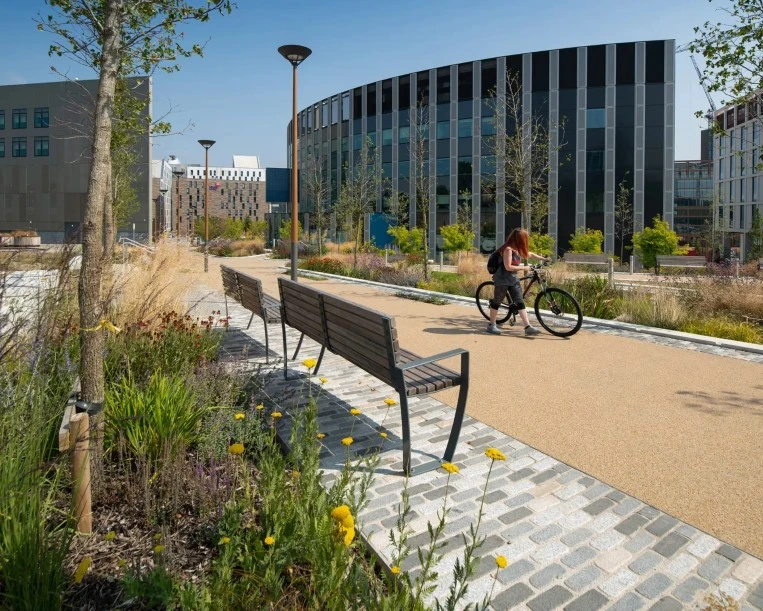
As a living laboratory for urban planning, infrastructure, and energy efficiency, the 24-acre Helix Innovation District in Newcastle is a first-of-its-kind center for urban innovation. The mixed-use area includes a new teaching facility for Newcastle University, an urban sciences building, the National Innovation Center for Aging (NICA), and sustainable housing and green spaces that encourage collaborative living and research. With a total budget of £350 million (USD $394 million), the recently completed Helix Innovation District is the culmination of a long-term dream to move sustainability, health, and wellness concepts from the drawing board to the real world without delay.
What can Professional Software do for Construction Projects in the UK?
Advanced software is a common thread connecting the most significant construction projects in the UK. Cloud-based planning, takeoff, and estimation software is one of the most valuable tools available to construction companies managing complex, sustainable infrastructure and residential developments. RIB Candy streamlines even the most ambitious projects, with planning features that seamlessly integrate time and money to enhance decision-making, and advanced cash flow analysis to quickly assess the financial implications of proposed changes. Candy also features versatile Master Libraries and on-screen 2D takeoff capabilities, enabling fast and reliable cost estimates.
Conclusion
The 10 major construction projects in the UK we have reviewed hint at the overall state of construction in this corner of the world, with the combination of social, environmental, and transportation changes quickly transforming the landscape. Unlike past times of wholesale change in the UK, today’s projects are driven by the latest construction equipment innovations and advanced software.
RIB Candy supports the diverse planning, takeoff, and estimation requirements of the top construction projects in the UK and all around the world. The user-friendly interface breaks down silos while enhancing sustainability and efficiency from day one. Get your free demo today and discover what RIB Candy can do for your business!

Most Recent
10 mins read
11 mins read
11 mins read
10 mins read
Blog Categories

Ebook











